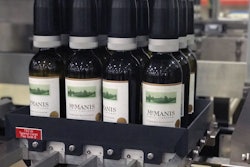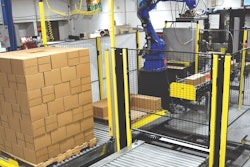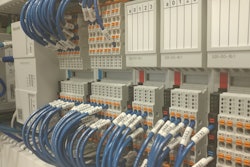
And those ‘sell by’ dates are inexact at the unit level since they are based solely on past observations on how food should generally behave.
Still, such dating has been the most effective way for both producers and consumers to err on the side of caution with food. It simply hasn’t been practical to monitor every single unit’s unique freshness conditions—until now.
A physicist by education and a bioelectrical researcher by trade, Dr. Jan Schnitker used a bit of lateral thinking to apply findings from his field to the food waste problem. He realized that 3D-printed electronic sensors, with their layered conductive topographies of multiple substrates and materials, had become practical to mass produce at a low cost. He foresaw an approaching price threshold that would make it cost effective for a manufacturer to splice a food-grade, disposable NFC sensor into a container, film, or absorbent pad in a package. That sensor could then communicate the unique freshness conditions—pH for example—of a single, unique perishable food item.
“Something like pH is an actual quality indication in contrast to what they do with a Time Temperature Indicator (TTI), where we think that if it has stayed under a given temperature for a certain interval, it’s a good product. That’s not true, temperature is just one influencing factor,” Schnitker says. “But what is the actual freshness on a chemical level? Temperature doesn’t answer that at all. That’s why we say we can move from a cold chain to a fresh chain, where a sensor is telling you actual facts about your product. And we can determine ranges, too, not just ‘spoiled’ versus ‘still good.’ The cold temperatures might have been maintained for the pork you’re buying, and the time to market may have been quick according to a TTI, but what if the pig had too much stress, or it was too old? Sensors can recognize chemical facts about the product.”
With these insights in mind, Schnikter co-founded a start-up called Is It Fresh, a project that has both sizzle and steak. The sizzle is the vision of a consumer holding a cellphone over a chicken breast package that has been in the fridge for some time and using an app to communicate with the NFC sensor to determine and illustrate freshness in an intuitive graphic format. Another sexy idea is the prospect of adaptive price modeling at the register based on the quality of the product, thus eliminating the need to manually discount milk or meat approaching an expiry date.
While these consumer-facing ideas are the sizzle, the steak in this trend is the untapped potential utility it could provide to the brand owners, CPGs, and food producers in following each and every unit through the supply chain.
“Consider the case of quality sampling in meat,” Schnitker says. “Often manufacturers have large teams using not-so-sophisticated tools to sample 0.1% of the meat produced and packaged. That’s eating into profitability both in labor and product loss, and it can only provide facts about the products sampled, not the vast majority not sampled. Also, on the B2C side, packaged products can carry things like enzymatic freshness indicators. For the end consumer, that’s fantastic—the physical indicator turns from green to red, and they know a product is bad. But that is not solving manufacturing logistics and retail problems on the B2B level, or accumulating information.”
That’s where NFC sensors, and attendant hardware to read them, shine throughout the chain, allowing food manufacturers to act on insights and efficiencies discovered there.
What would implementation mean for food manufacturers? Ideally, it’d be as simple as buying rolls of disposable sensors and adding a piece of equipment to the line to introduce them to the packages. The sensors could be added at the converter level, too, and baked into a film. But the bigger questions are in the architecture managing all the data and how to use it. Plus there’s the minor issue of solving all of the questions of integration, validation, and legal approval for every individual SKU before a company like Is It Fresh can go into mass production on rolls of billions of sensors or hardware to read them.
“The good news is, for most products, it’s possible,” Schnikter says. “We just have to do it.”

























